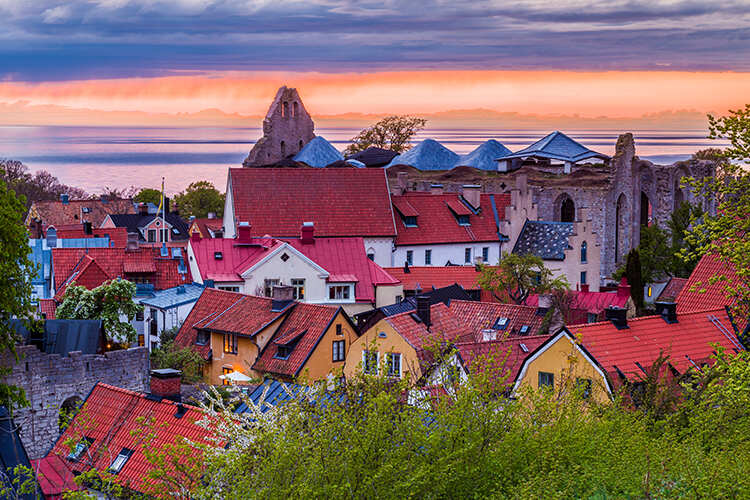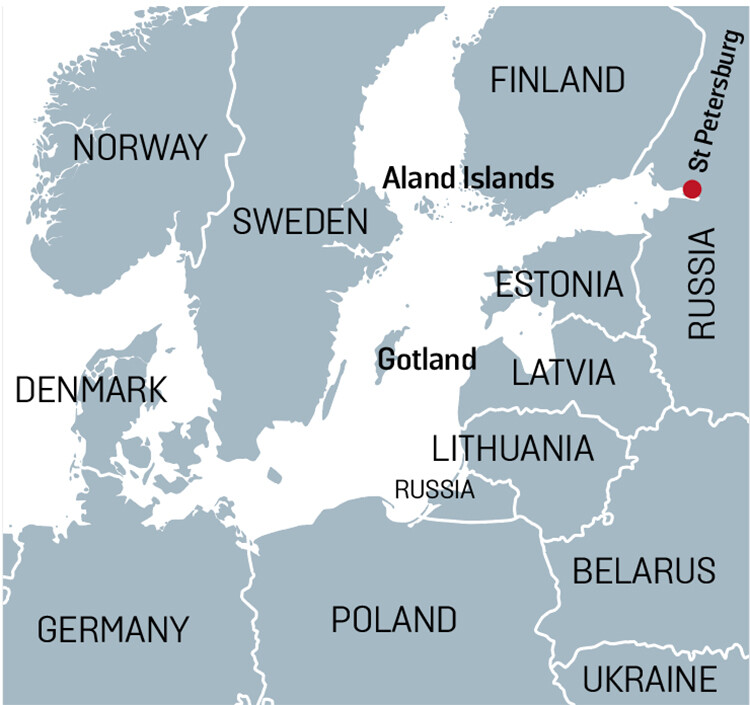

Geopolitical Hotspot
Tim Marshall considers the strategic importance of a holiday island off the Swedish coast
Sweden has brought a lot to NATO since becoming its 32nd member in March: a well-trained high-tech army, a first-class air force, several modern submarines suited to the Baltic Sea’s shallow waters and an island – Gotland.
It’s located in the middle of the Baltic, about 100 kilometres from the Swedish mainland and 300 kilometres from the Russian exclave of Kaliningrad, home to most of Russia’s Baltic Sea Fleet. For the modern military, those are short distances. The island has an area of 3,160 square kilometres, a population of 58,000, and a coastline almost 800 kilometres long. It straddles the sea lanes leading out of St Petersburg and Kaliningrad, through to the Skagerrak Strait and out into the North Sea. Control of Gotland is vital for control of the Baltic in the event of conflict.
NATO can use it to create an anti-access/area-denial ‘bubble’ across the Baltic, hampering the Russian fleet’s ability to leave harbour and its air force from operating freely. Conversely, Russian control would make NATO’s defence of the Baltic states much more difficult. They could only be safely resupplied via the narrow Sulwalki Gap between Poland and Lithuania, and if that was breached by Russian forces, the Baltic states would be cut off.

Moscow has long been aware of Gotland’s strategic importance. In 1808, Russian forces briefly occupied the island before being chased off in an event that led to Sweden introducing conscription. Following the Napoleonic Wars, Sweden was a much-reduced power and militarily retreated from the European stage and became a neutral country. After 200 years of watching from the sidelines, it took the shock of Russia’s invasion of Ukraine to change that position.
Now, NATO membership puts it on Russia’s target list. If, in the future, Moscow gambles that NATO is a spent force and launches an attack on the Baltic states, it could be preceded by an operation to seize Gotland and install air defence systems there. The Kremlin’s ambition in the area was shown recently when Russia published a document suggesting that the maritime borders in the Gulf of Finland needed to be discussed.
Back in 2005, with the Cold War in the rear-view mirror, Gotland had been demilitarised as a gesture of goodwill towards Moscow. The island has always attracted holidaymakers, but after 2005, there was an influx of men who didn’t always fit the usual profile of tourists. Vessels from Russia’s vast fleet of unofficial ships began loitering off the coast.
The Swedes were suspicious, but it took Russia’s annexation of Crimea in 2014 to really focus minds in Stockholm. Swedish troops were reintroduced in 2016, and by 2018, there was a new permanent regiment on Gotland equipped with tanks. In 2021, the air defence system was taken out of storage and in 2023, the first military exercises on the island this century took place, involving troops from Sweden, Poland and the UK. This year, the government has approved the construction of a new port that will have defence capabilities, and the island’s large artillery firing range will be upgraded.
As well as the island, Sweden also has Gotland, the submarine. Stockholm has three of these advanced diesel-electric vessels, built to operate in the Baltic, with another two due to come into service within five years. The Baltic Sea has an average depth of about 60 metres, which is considered shallow enough for some submariners to refer to it as a ‘flooded meadow’. The USA’s large nuclear-powered subs can’t operate there, nor can most of their Russian equivalents, but the Swedish Gotland submarine can.
Watching all of this with interest is Finland. Helsinki oversees the 6,700-island archipelago known as the Aland Islands, which are populated by 30,000 people, most of whom speak Swedish. It sits directly between the Baltic coasts of Sweden and Finland. Down the ages, it has been part of both the Swedish and Russian empires, but it’s now an autonomous region of Finland. The events of the last two years, and Finland’s accession to NATO, have sparked discussion in Helsinki over whether to militarise the islands. Most islanders are against the idea, and the consensus in Finland is not to make such a move, but what was previously unthinkable is now being thought about.
Until 2014. remilitarising Gotland wasn’t on the cards. The geography is still the same; it’s just the times that have changed.




